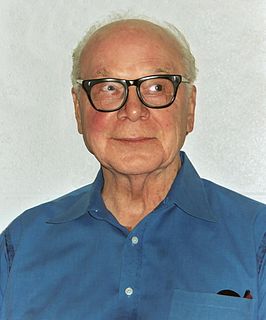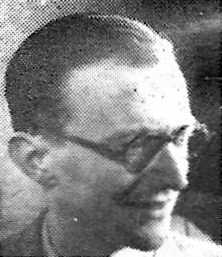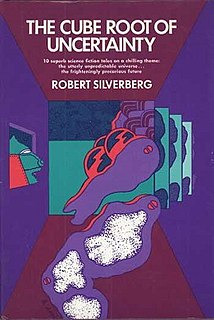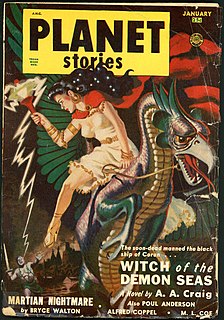
James Benjamin Blish was an American science fiction and fantasy writer. He is best known for his Cities in Flight novels, and his series of Star Trek novelizations written with his wife, J. A. Lawrence. He is credited with creating the term "gas giant" to refer to large planetary bodies.

Philip José Farmer was an American author known for his science fiction and fantasy novels and short stories.

Robert Silverberg is an American author and editor, best known for writing science fiction. He is a multiple winner of both Hugo and Nebula Awards, a member of the Science Fiction and Fantasy Hall of Fame, and a Grand Master of SF. He has attended every Hugo Awards ceremony since the inaugural event in 1953.
Alexei Panshin is an American writer and science fiction (SF) critic. He has written several critical works and several novels, including the 1968 Nebula Award-winning novel Rite of Passage and, with his wife Cory Panshin, the 1990 Hugo Award-winning study of science fiction The World Beyond the Hill.

Dallas McCord "Mack" Reynolds was an American science fiction writer. His pen names included Dallas Ross, Mark Mallory, Clark Collins, Dallas Rose, Guy McCord, Maxine Reynolds, Bob Belmont, and Todd Harding. His work focused on socioeconomic speculation, usually expressed in thought-provoking explorations of utopian societies from a radical, sometime satiric perspective. He was a popular author from the 1950s to the 1970s, especially with readers of science fiction and fantasy magazines.

Willy Otto Oskar Ley was a German-American science writer and proponent of cryptozoology. The crater Ley on the far side of the Moon is named in his honor.

Lloyd Biggle Jr., was an American musician, author, and internationally known oral historian.

Mosfilm is a film studio which is among the largest and oldest in the Russian Federation and in Europe. Its output includes most of the more widely acclaimed Soviet-era films, ranging from works by Andrei Tarkovsky and Sergei Eisenstein, to Red Westerns to the Akira Kurosawa co-production Dersu Uzala and the epic War and Peace.

Kate Wilhelm was an American author. She wrote novels and stories in the science fiction, mystery, and suspense genres, including the Hugo Award–winning Where Late the Sweet Birds Sang, and she established the Clarion Workshop with her husband Damon Knight and writer Robin Scott Wilson.
Miriam Allen deFord was an American writer best known for her mysteries and science fiction. During the 1920s, she wrote for a number of left-wing magazines including The Masses, The Liberator, and the Federated Press. Her short story "A Death in the Family" appeared on Night Gallery's second season appearing in Episode Two segment One with Desi Arnez Jr.
The science fiction writer Robert A. Heinlein (1907–1988) was productive during a writing career that spanned the last 49 years of his life; the Robert A. Heinlein bibliography includes 32 novels, 59 short stories and 16 collections published during his life. Four films, two TV series, several episodes of a radio series, and a board game derive more or less directly from his work. He wrote a screenplay for one of the films. Heinlein edited an anthology of other writers' SF short stories.

James Murdoch MacGregor, was a Scottish journalist and author best known for writing science fiction under the pen name J.T. McIntosh.

The Vanguard Press (1926–1988) was a United States publishing house established with a $100,000 grant from the left wing American Fund for Public Service, better known as the Garland Fund. Throughout the 1920s, Vanguard Press issued an array of books on radical topics, including studies of the Soviet Union, socialist theory, and politically oriented fiction by a range of writers. The press ultimately received a total of $155,000 from the Garland Fund, which separated itself and turned the press over to its publisher, James Henle. Henle became sole owner in February 1932.
E. M. Almedingen was a British novelist, biographer, children's author, and member of the Royal Society of Literature.
The following is a list of works by Arthur C. Clarke.
Robert D. Webb was an American film director. He directed 16 films between 1945 and 1968. He won the Academy Award for Best Assistant Director for In Old Chicago, the last time that category was offered.

The Cube Root of Uncertainty is a collection of science fiction short stories by American writer Robert Silverberg, published in hardcover by Macmillan in 1970 and issued in paperback by Collier Books in 1971. No further editions have been issued.

The following is a list of works by science fiction and fantasy author Poul Anderson.












